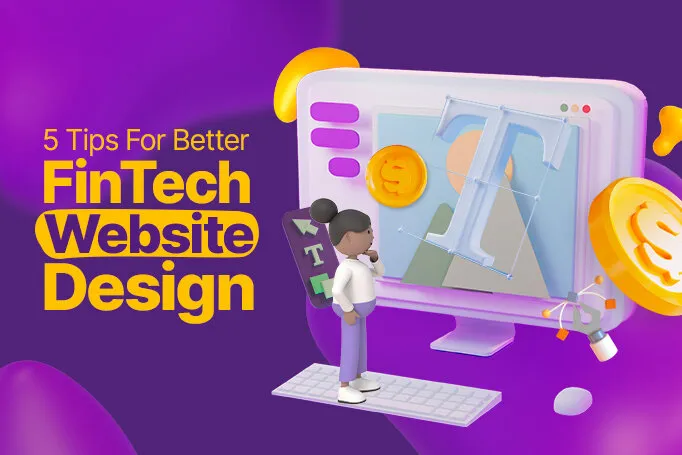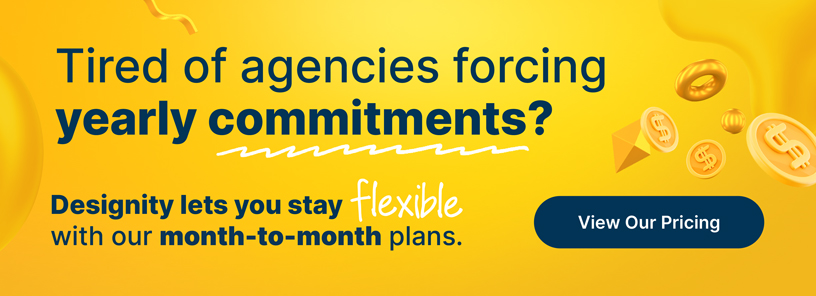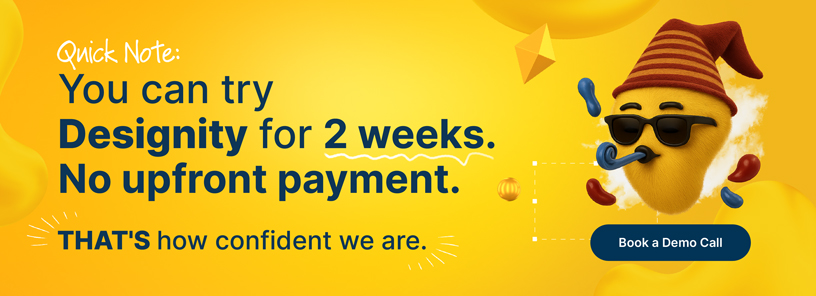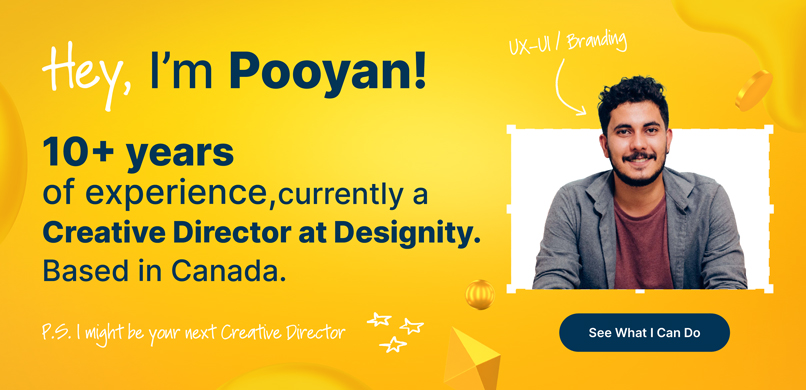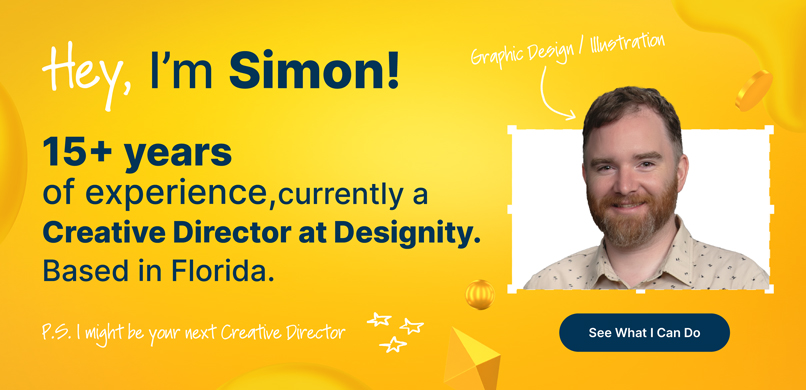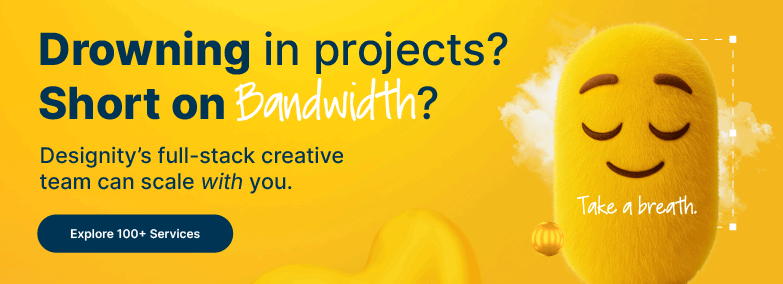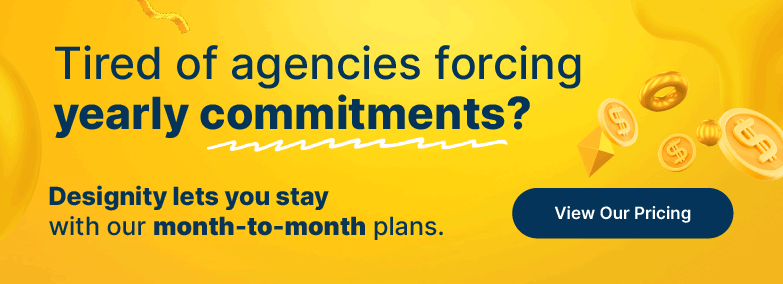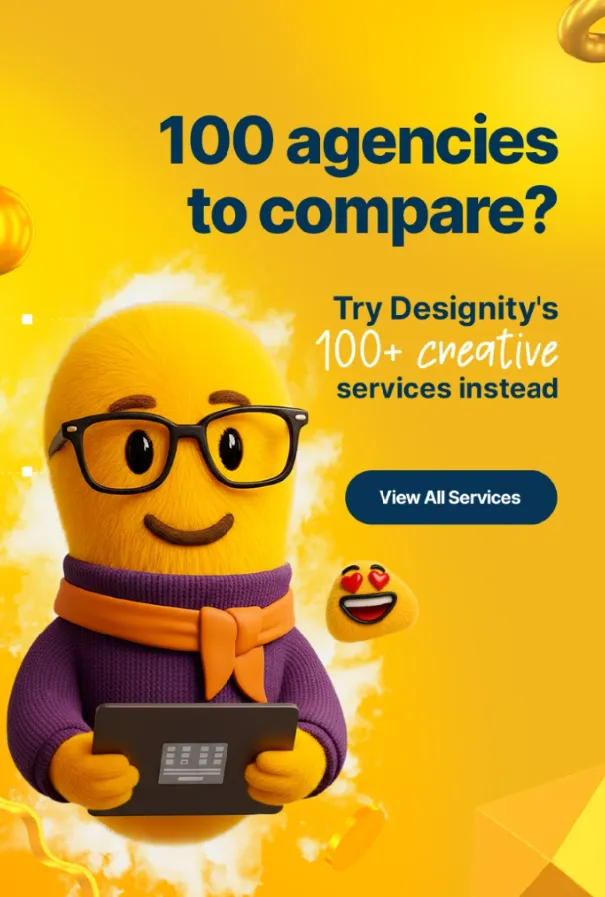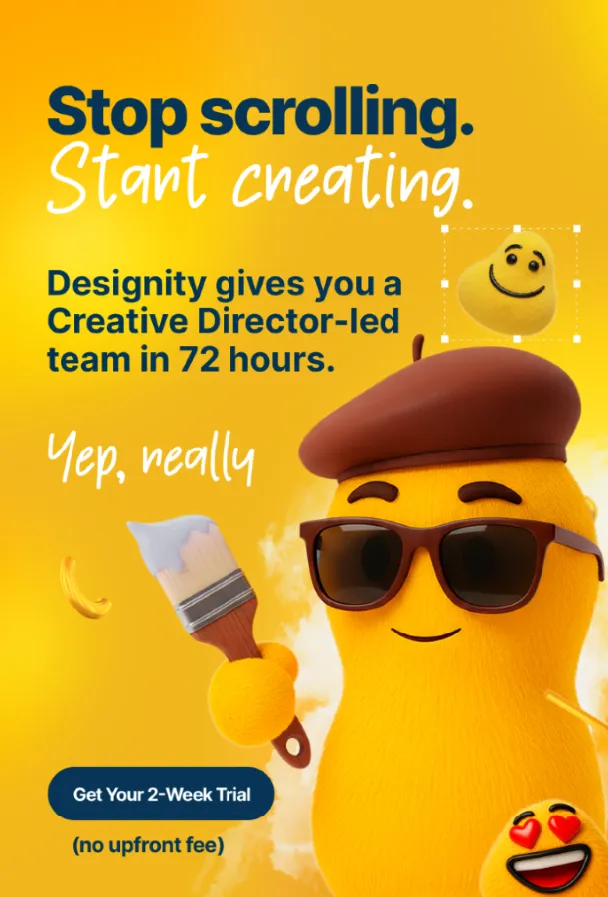When it comes to financial institutions, designing a website is a bit like walking a tightrope. It’s got to be appealing to the eye, while still functional and intuitive, and one misstep could mess up everything!
Imagine going shopping right after a store’s biggest “Black Friday” sale, walking into a picked-over store with a messy and unappealing entrance. You feel on guard, watching your back, worried that someone is going to yank that 60% off toaster oven right out of your arms. Or that feeling you get when you’re shopping somewhere other than your neighborhood grocery store. Somewhere where the aisles aren’t labeled correctly, and the signs are all in Comic Sans.
Makes you uncomfortable, doesn’t it?
A company’s website design is just like those storefronts. It's also like a first conversation too. It’s the first thing their customers see and trust us, it’ll be more than enough information for them to be able to form a first impression and first opinion about your client.
So, if you’re not sure where to get started with creating that beautiful and inviting storefront for a FinTech company or any other financial services client, then this blog is for you.
Today, we’re taking you through five financial services website design tips that are vital to the success of your client’s overall business. Let's get ready to design the next amazing FinTech website!
1. Give the Website Clear Navigation and On-page Structure
Good UX/UI (user experience, user interface) is a must in today’s age, especially for finance websites.
Your client wouldn’t want their commercial bank’s front lobby looking like a place from Hoarders, so their website shouldn’t look that way either.
- Every one of their web pages should be clean, easy to navigate, and easy to use, so start with pencil and paper, sketching out a simple page structure for the home page and at least one interior page.
- Think through the process of how a new website visitor would want to navigate the page.
- After you’ve sketched out the structure, design lo-fi wireframes for the key pages, keeping it simple, quick, and rough. This is an opportunity for you to think through more of how a person would get to the important information they’re looking for.
- Create an information architecture of how each page connects and use that to create the navigation menu.
It's also a good idea to avoid over-cluttering any part of the website with design elements or using colors or fonts that are difficult to read, especially for the older folks who might be having enough trouble on the internet as it is.
Contact information, the different departments available, and help menus should be positioned for easy locating and clearly marked to prevent customers from having to spend extra time (and getting frustrated!) hunting down what they’re looking for.
A clean, easy-to-use financial services website that quickly lets new and existing customers know the information they need to know will have a huge impact on how long they stay on your client’s site!
We could write a book just on this first step, so look here for more web design tips.
2. Keep Branding Consistent

Ultimately, it all comes down to branding. Integrating the why of every design decision should involve a thorough knowledge of your client’s brand guide, their vision and values, who they’re trying to reach, and what kind of company they hope to become in five years.
Remember that a great website should last for years and years, so what will people think five years from now? Take a guess, link that up to the client’s brand, and do your best to express that through the visual and written elements of the website design.
This is especially important if your client has a social media or television presence as well!
You’ll want to be sure that the messaging, values, and positioning that their customers see on their website matches whatever other personas they might have. Ask the client for their sales team’s Ideal Client Profile (ICP) and target audience personas. If they don’t have any, it’s a good opportunity to offer some marketing strategy services to them!
It’s not just about messaging and tone of voice, but logo, color schemes, typography, and fonts. If they have a brand guideline, be sure to stick with it, and if they don’t, then explain to them why it’s so important for their brand!
Offer to whip up a brand guide for them to give you and your team a solid starting point to work from before tackling their website design.
3. Optimize All Conversion Paths
Okay, so we know this is getting into the weeds of marketing a bit, but don’t run away!
Design and marketing are two sides of the same coin: helping people communicate with other people. If the client has a marketing team, bring them on as soon as possible. If not, discuss these things with the client as you go along.
Now, about those conversion paths …
You may already know, but just in case, a conversion path is the series of steps that a customer has to take before getting something done, such as making a purchase, registering for an event, checking out a blog, or filling out an application.
Often this path is what separates a curious visitor into a serious lead for your client, so it’s important that the website has clean design so that this path is easy to follow and free of any hang-ups that could cause a customer to turn around and click away in frustration.
To keep things easy, make sure all of their CTAs are clearly marked and any forms or applications customers need to action on are linked and easy to find.
It’s also very helpful if any new pages a customer clicks on open in a different tab to keep your client’s potential convert anchored to their site.
If your client is promoting their content or events on social media, they might appreciate a clearly designed landing page for their clients, complete with easy-to-do forms to collect information, download free content, or register for events.
4. Make Websites Mobile-friendly and Experience-unified
Let’s face it.
People are always on their phones. All the time. Everywhere. Even in Financial Services!
Chances are, the first time that a potential customer stumbles onto your client’s website is going to be after following a post they found on social media. Sure, there’s a solid chance they’re at their office using a desktop, and in the Financial Services industry, that’s certainly the case. However, phones still rule the day for most B2B design work.
Because of this, it’s absolutely crucial that financial services web designs are compatible with phones and other devices. You’ve heard of mobile-first design, but we all know that 99% of the time, you’re designing for a large display first.
That‘s ok, we all do it, just keep dropping down to a small display size as you go, or if you’re writing your code from scratch, write down your overall goals before you start so you don’t forget where you are in the middle of the process.
Keep layouts flexible, make sure they load quickly, and ensure that all content is both easy to read and easy to see on a much smaller screen.
If the client has a development team working on an app or SaaS product, bring their dev team into the process to integrate things for a seamless experience. Be willing to sacrifice your preferred design to allow for a visually integrated experience across all apps and websites.
Your client’s phone-addicted customers will appreciate the convenience.
5. Button up Site Security Before Launch

Handing over money and sensitive data is kind of a big deal.
You just can’t mess around with people’s futures.
Credit card dashboards, life insurance companies, investment banks, digital banking, it’s all online and the data they require MUST be kept secure.
This is why trustworthiness is such a big deal in the financial services industry.
To earn new customers, financial services companies have to not only win their customer’s trust in the first place but maintain that trust so that their customers are always satisfied that their funds and info are safe. This is especially true with a FinTech SaaS offering since users will need sales reinforcement every month as their subscription renews!
Make sure their security and privacy policies are up on their homepage and easy to see.
That’s extremely important, especially for a financial services company! Customers want to see how important security is to your client and what steps they’re taking to keep their information protected.
This is also why you should encourage your client to SSL encrypt their website if they haven’t already. Easy options like Let’s Encrypt and AutoSSL make it simple for most hosting accounts to automatically install and renew SSL certs without buying one separately.
They should always have trust seals up too, like Norton Secured, McAfee Secure, BBB Accredited, Google Safe Browsing, whatever it takes to put their customers at ease and make sure they know that your client is taking active steps to keep them safe.
Another good way to show your client’s trustworthiness is through customer testimonials. If they don’t have any displayed on their website, urge them for an example so you can display it for them!
Potential customers need to know that your client’s services are top-notch and what better way to do that than to show other happy customers?
Trustworthiness goes a lot further than just securing customers’ money and data, after all.
This is especially true of smaller companies, those without a big name to back up their services. If your client is a smaller financial services company trying to establish itself, it’s a good idea to include the logos of other larger businesses they may be affiliated with on their website. It’s good for their credibility and a great way to put them on the path toward one day becoming one of those big fish as well.
<div class="c-blog_comp-cta cc-component-2"><div class="c-blog_comp-cta-left"><div class="c-blog_comp-cta-left-wrap"><img src="https://global-uploads.webflow.com/61cdf3c5e0b8155f19e0105b/63695243d096983691046ac3_Potential-Creative.png" loading="lazy" alt="" class="c-blog_comp-cta-left-img"></div></div><div class="c-blog_comp-cta-right cc-dark"><div class="c-blog_comp-content"><div class="c-text-wrapper cc-mb-32"><div class="c-title-4 cc-bold"><strong>Like to work as a freelancer with consistent income?</strong></div></div><div class="c-text-wrapper"><div class="c-text-2">Designity's collaborative model is designed to give you all of the perks of being a freelancer without the income instability.<br></div></div></div><div class="c-blog_comp-wrapper"><a href="http://designity.com/creatives" target="_blank" class="c-button w-button"><strong>Join Our Creative Community</strong></a></div></div></div>
Design Your Way into Your Client’s Hearts
Remember, your client’s website is very likely to be their customer’s first point of contact with their businesses.
By making sure your client’s finance websites are designed with these 5 tips in mind, you can make it easier for your clients to attract those shiny new customers while also keeping their existing ones happy, informed, and secure.
What do you look for in a FinTech website?
